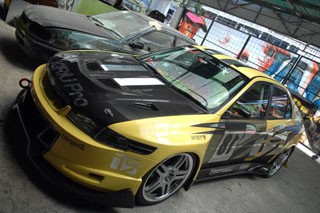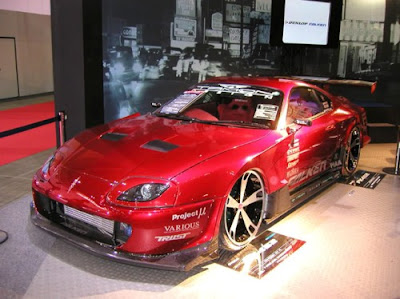 Making its world debut at the New York International Auto Show alongside the new 2010 Legacy sedan is Subaru's fourth-generation Outback model which is the only other version of the new Legacy that will be heading to the States. Like its sedan counterpart, the Outback is a little bit bigger than its predecessor while it also benefits from the introduction of revised powertrain options and an improved 8.7 inches of ground clearance.
Making its world debut at the New York International Auto Show alongside the new 2010 Legacy sedan is Subaru's fourth-generation Outback model which is the only other version of the new Legacy that will be heading to the States. Like its sedan counterpart, the Outback is a little bit bigger than its predecessor while it also benefits from the introduction of revised powertrain options and an improved 8.7 inches of ground clearance.Subaru says that even though the new Outback is clearly related to the previous generation models, it "marks a departure in design toward a new, bolder look." We'd go with boring and repeat that Subaru seriously needs to hire some capable designers to convey some beauty and character to the brand's products.
 Like its predecessor and nearly any station wagon in the market that want to appear more "off-roadish", the Outback stands out thanks to the customary black body cladding, the higher roof rails and the aluminum decorations plus. Furthermore, ground clearance on the new model has been increased to 8.7 inches which is good news for those that actually use the Outback in the... outback.
Like its predecessor and nearly any station wagon in the market that want to appear more "off-roadish", the Outback stands out thanks to the customary black body cladding, the higher roof rails and the aluminum decorations plus. Furthermore, ground clearance on the new model has been increased to 8.7 inches which is good news for those that actually use the Outback in the... outback.
Built on an all-new platform, the 2010 Outback sits on a 2.8 inch longer wheelbase, now 107.9 inches, while its also four inches taller and two inches wider than the previous model. However, due to the shorter front and rear overhangs, 2010 Outback is almost one inch shorter than its predecessor. Subaru supports that total passenger room is increased by 8 cubic feet, now 105.4 cu. ft., and maximum cargo capacity (with the standard 60/40 split rear seatbacks folded) is up by 6 cubic feet to 71.3 cu. ft.
 The 2010MY Outback will be offered in the States with two engines, the revised 2.5-liter 4-cylinder Boxer that delivers 170HP at 5,600 rpm and 170 lb.-ft. of peak torque at 4,000 rpm and a new 3.6-liter six-cylinder Boxer producing 256HP and 247 lb.-ft. of peak torque. The 2.5L unit comes with a new standard 6-speed manual transmission, or the available Lineartronic CVT while the 3.6L Boxer is teamed with a 5-speed electronic automatic transmission.
The 2010MY Outback will be offered in the States with two engines, the revised 2.5-liter 4-cylinder Boxer that delivers 170HP at 5,600 rpm and 170 lb.-ft. of peak torque at 4,000 rpm and a new 3.6-liter six-cylinder Boxer producing 256HP and 247 lb.-ft. of peak torque. The 2.5L unit comes with a new standard 6-speed manual transmission, or the available Lineartronic CVT while the 3.6L Boxer is teamed with a 5-speed electronic automatic transmission.
All in all, Subaru offers three different Symmetrical All-Wheel Drive systems in the 2010 Outback line. The 2.5i models with a manual gearbox use a viscous-coupling locking center differential to distribute power 50/50 front to rear while the 2.5i with the CVT makes use of an electronically managed continuously variable transfer clutch. As for the range-topping Outback 3.6R, it is fitted with a Variable Torque Distribution (VTD) All-Wheel Drive system that normally sends more power to the rear wheels, continuously adjusting power distribution.














































